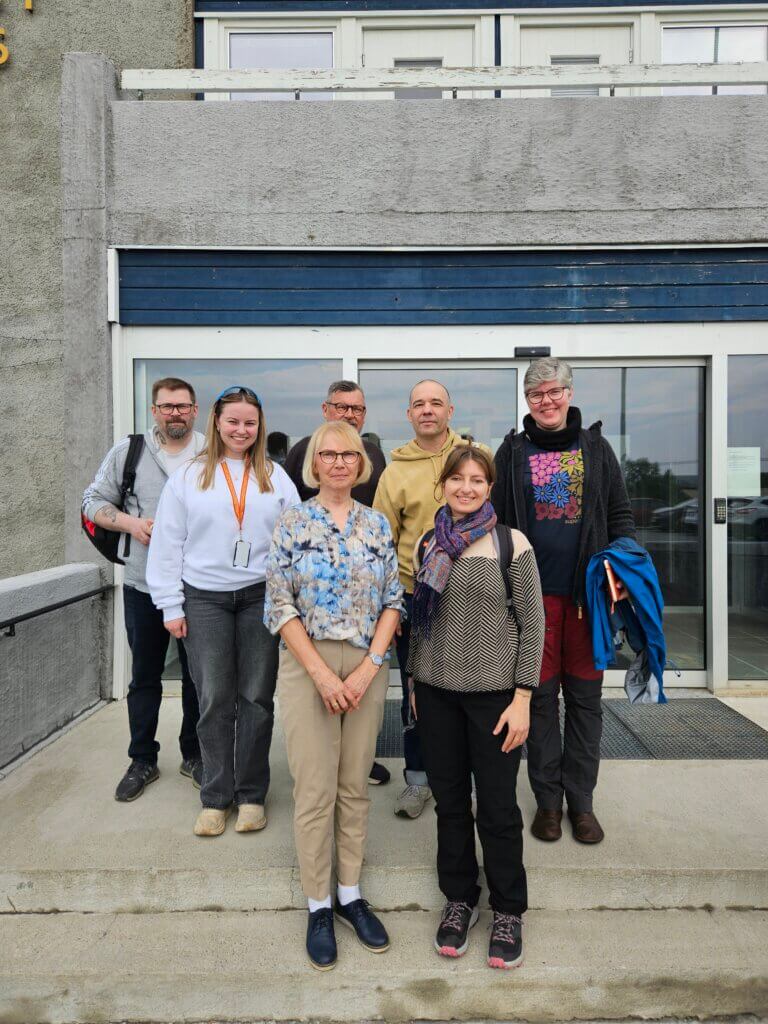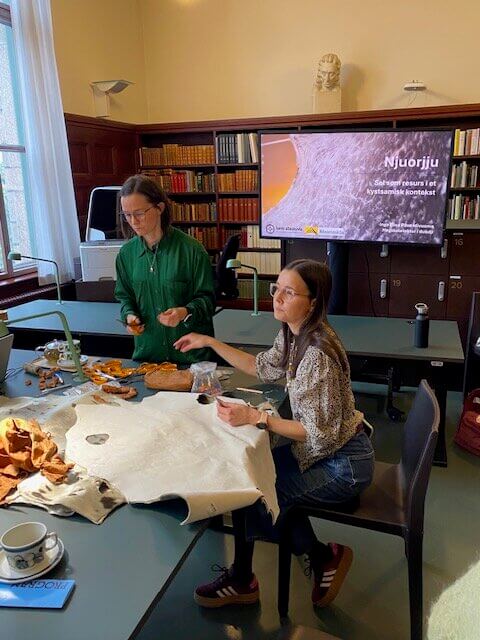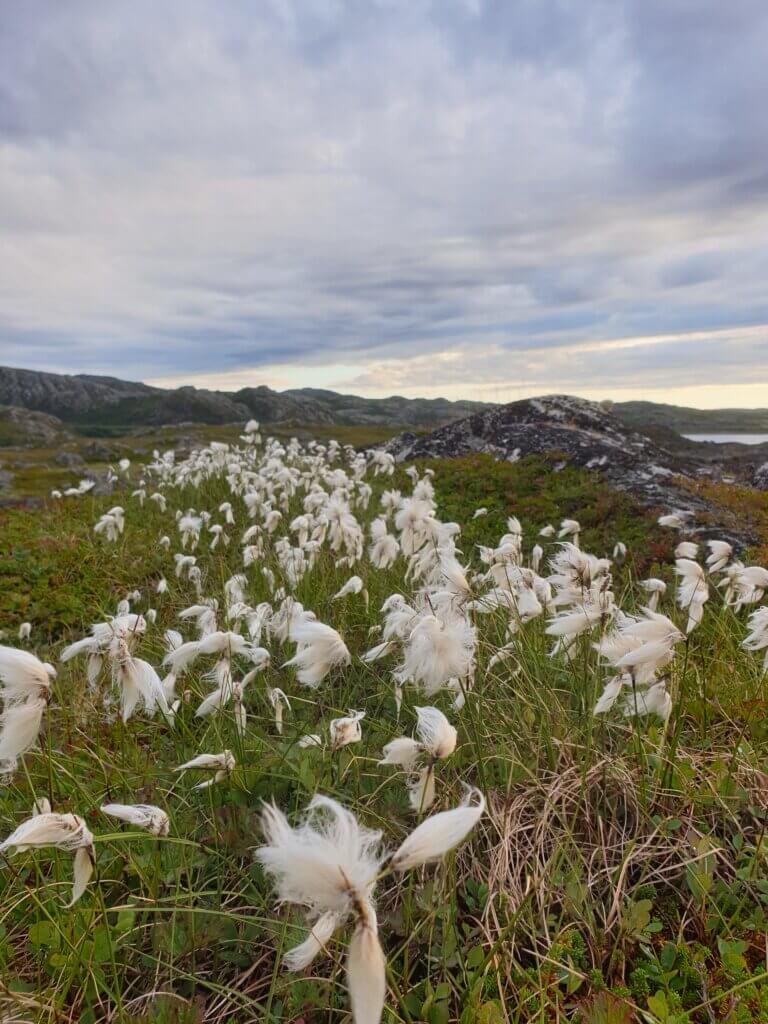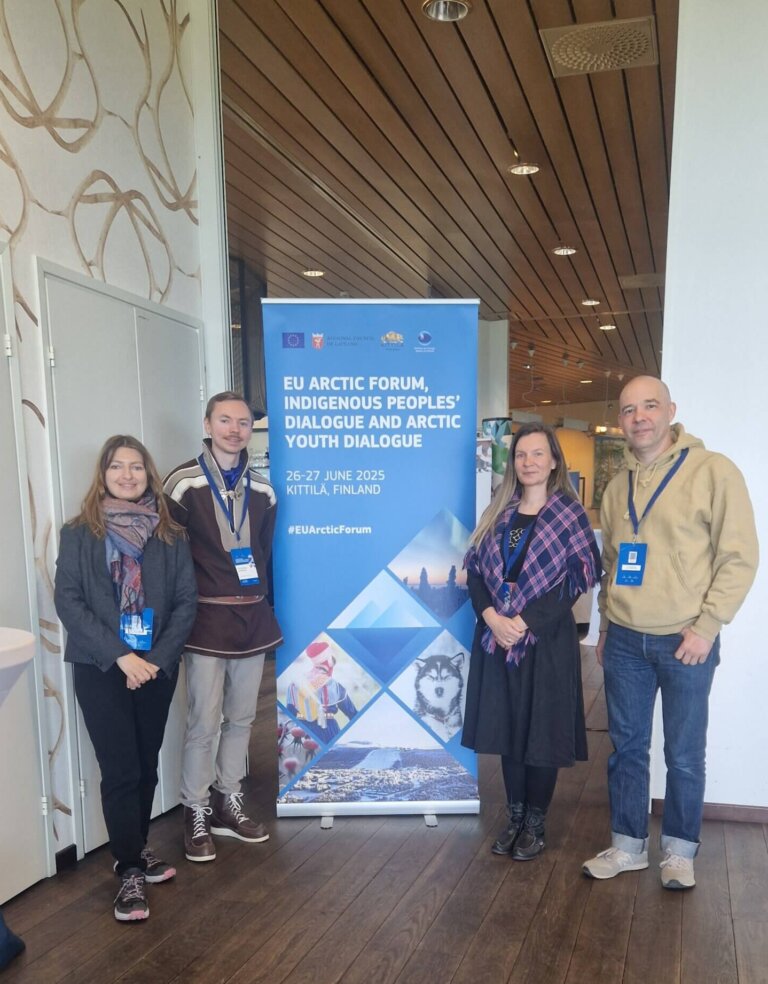Discussing Youth futures in Unjárga/Nesseby
On July 1st, BIRGEJUPMI team members Ilaria Sartini, Stephan Dudeck, Thora Herrmann, and Jan-Erik Henriksen met with the Mayor of the municipality of Unjárga/Nesseby, Berit Ranveig Nilssen, along with the Youth Board President, Eva Katrine Dikkanen Margit, and the Youth Club President, Per-Inge Olsen. The meeting, kindly organised and hosted by the Mayor, focused on work package 4 “Local and global futures: young people’s visions of sustainable livelihoods and inclusive environmental decision-making” and discussed together key challenges facing local youth and pressing topics that matter to the youth in the municipality today.
In several smaller municipalities across Finnmark, high youth emigration remains a pressing concern. At the same time, climate change mitigation measures, such as the development of windfarms and powerlines, are polarizing the political and social landscape. For some, these large-scale projects represent opportunities to attract new industries and stimulate local economic growth. For others, they raise serious concerns: windfarms can encroach on reindeer grazing areas, threatening Sámi livelihoods and cultural practices, and questions have been raised about the adequacy of local consultation and consent processes in planning these developments.
WP4 aims at understanding what are young people’s ideas and visions of futures, in the face of climate change and how these ideas can be communicated in an effective way. In addition to close cooperation with local youth organizations (Youth Club, Youth Council), collaboration with local schools and cultural institutions such as the Varanger Sámi Museum and the Isak Saba Center was identified as essential for grounding the project in the voices and lived experiences of local youth.
The meeting was a great opportunity to learn more about the life of local youth and the challenges they face. It provided rich and interesting insights for the next steps of WP4, ensuring our work remains closely connected to the perspectives and priorities of young people in the municipality.



